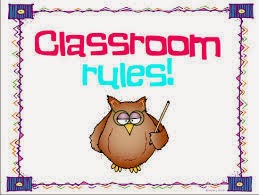Final Field Blog Post
Overall, creating a field blog was a very rewarding experience. I believe it
was even more helpful than the course blog in helping me to reflect and build
upon my knowledge of the field of education. The field blog allowed me to
reflect upon my lived experiences and observations and experience firsthand the
information we discussed in class.
One of my favorite field blogs was my first field blog. This blog post was
about our class trip to Mercer Elementary School. I explored Ayers’ assertion
that classroom layout and design affect student learning. I noted how the use
of large group desks instead of individual desks promotes student learning and
what Ayers calls "the social nature of learning." I enjoyed this blog
post because I had previously never thought about how classroom design can be
an extension of certain pedagogy and be used to promote increased learning.
My absolute favorite field blog post, however, was my field blog post 2, which
was about Beachwood Middle School. In this post, I pondered what role technology
should have in the classroom. I was absolutely amazed by and in awe of how Mr.
Holman based his entire teaching around technology. Students created and wrote
their own, online text book, produced a blog through which they could
communicate with other students, and produced projects using various
technologies such as green screen and video editing. This experience and post
helped me to reflect upon the fact that new technologies need to be further
integrated into classrooms around the country to promote student growth and
learning. This experience is definitely my most memorable experience of Education
100 and probably one of my most memorable experiences of freshman year. I
walked out of Mr. Holman's classroom feeling truly inspired.
Another filed blog post that I really enjoyed, and which is directly related to
my paper is my post 8. I explored the following question: "To what extent
does standardized testing prompt teachers to use the banking concept of education?”
In this post, I asserted that banking education does promote teaching to the
test and banking education. Yet, I noted that certain very cognizant teachers
can avoid this trap and still teach with meaning. For example, Mrs. Klampe
taught her students their OGT vocabulary by having them draw pictures
symbolizing the word instead of making them remember the definitions through
rote repetition.
A final post I really enjoyed
was post 12. In this post I discussed the ethicality of censoring student
materials. This post helped me to see how much I truly love literature and also
how I love to explore philosophical questions about ethics.
I
believe blogging was truly instrumental in developing my views and knowledge of
education. I believe it would also help students taking the course in the
future.















